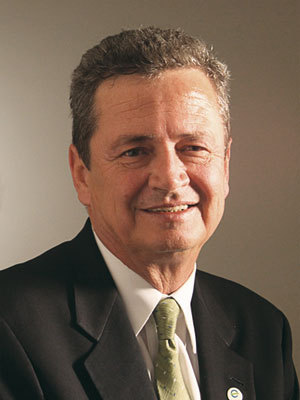How Far We've Come in the Ethanol Industry

July 22, 2011
BY Tom Buis
Last month, I attended the International Fuel Ethanol Workshop & Expo in Indianapolis and was once again impressed with the presentations, booth exhibits and new technologies on display.
Every year, as I travel to these expos, I am reminded of how far the ethanol industry has come in only a few short decades, and how important it is that our industry succeeds in the future. Ethanol today is the most commercially viable alternative we have to foreign oil. It represents nearly 10 percent of our transportation fuel, reducing oil imports and harmful emissions. And now, with the U.S. EPA’s approval of a label for E15, we are one step closer in the process to adding E15 into the marketplace—a move that will create U.S. jobs, improve the environment and strengthen national security by displacing foreign oil.
Advertisement
The label was announced by the EPA on the first day of the FEW—on the heels of a plenary panel about the American Ethanol partnership, an initiative by NASCAR to use Sunoco Green E15 in all of its Sprint Cup Series races. The new fuel has been used in every Sprint Cup Series race this season and, according to NASCAR, E15 hasn’t caused a single problem for their drivers. In fact, they have found that ethanol is a higher combustion fuel that provides their drivers increased horsepower.
The American Ethanol’s partnership is helping NASCAR to go green and educating millions of consumers about the economic and environmental benefits of ethanol. The partnership is also a key validation of ethanol as a fuel for all Americans just as we are engaged in debate to open the market to even higher blends.
As I write this column, negotiations are continuing between leaders in the House and Senate to reform ethanol tax policies to invest in ethanol infrastructure and next-generation feedstocks.
Advertisement
Today we don’t have a production issue, we have a market-access issue. If we’re ever going to advance biofuels in this country, we need to open the market through expanded installation of flex-fuel pumps and other means, so that consumers do not have their fuel choice made for them. We know flex-fuel pumps work because in places such as North Dakota, South Dakota and Minnesota, ethanol sales have skyrocketed—more than 200 or 300 percent since the flex-fuel pumps were put into the ground.
People make choices based on their pocketbook as well as on their values. Ethanol is the most affordable motor fuel on the planet and, as people in the Midwest know, it also creates jobs and helps our Midwestern economies. In the near term, E15 is a crucial step in giving consumers more choices at the pump. Long term, an investment in infrastructure will level the playing field and spur the private capital investment move into next generation cellulosic ethanol, a 50-state solution.
There is no doubt that the ethanol industry has come a long way, but we still have much farther to go. Growth Energy is committed to working with producers and supporters of ethanol to ensure the future of this industry and continue to help our nation reduce our dependence on foreign oil, revitalize our rural communities and secure our energy future for generations to come.
Author: Tom Buis
CEO, Growth Energy
(202)545-4000
tbuis@growthenergy.org
Upcoming Events





